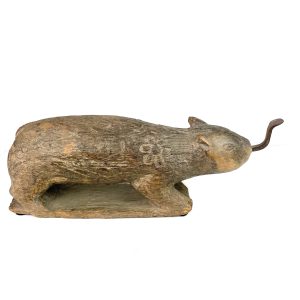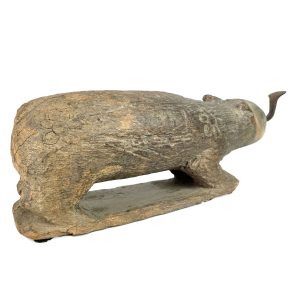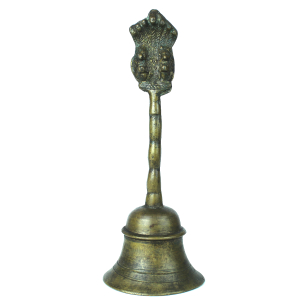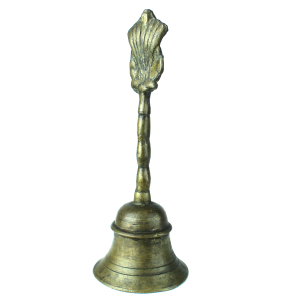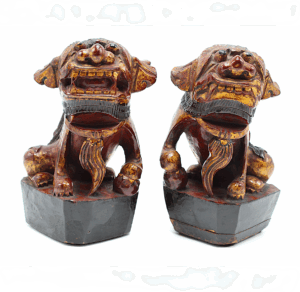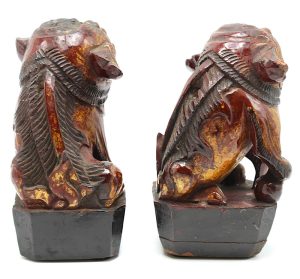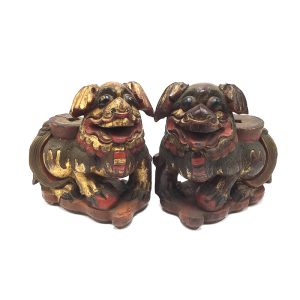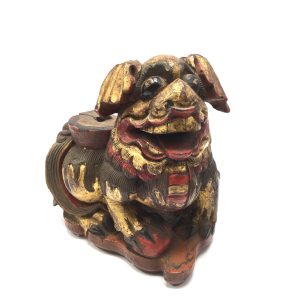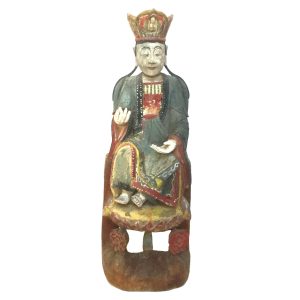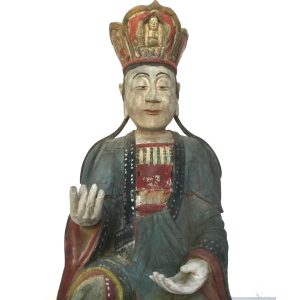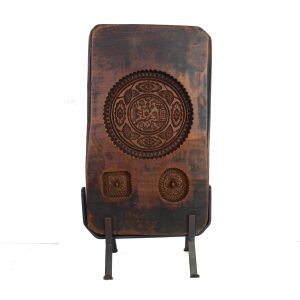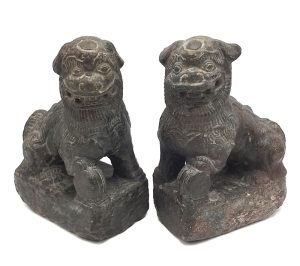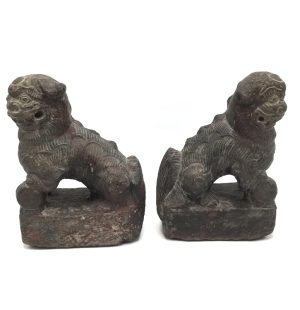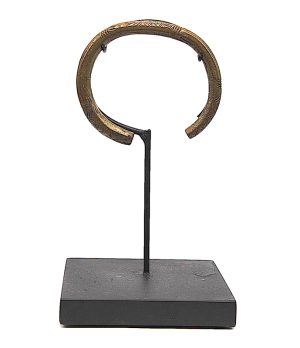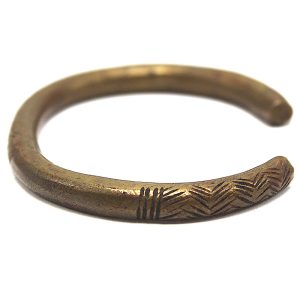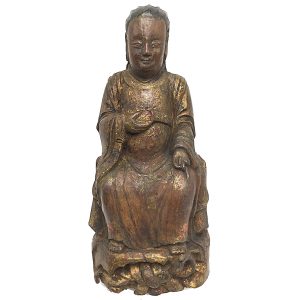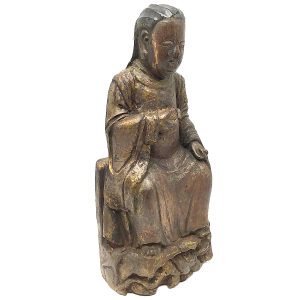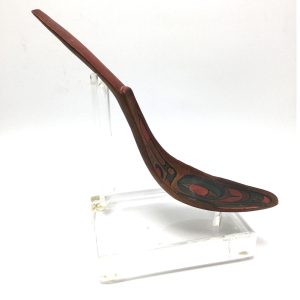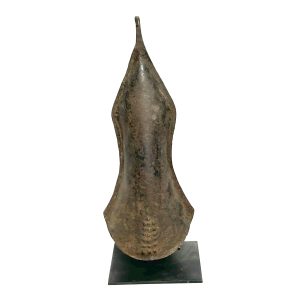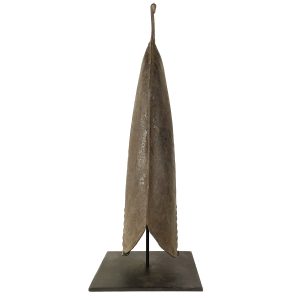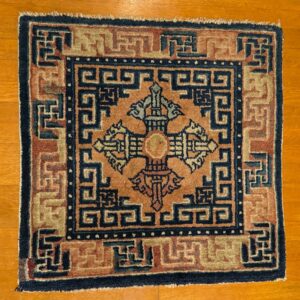Showing 133–144 of 199 results
-


$395.00
SOLD
This antique coconut grater is a very practical multi-use creation designed to cut, grate, shave, husk, and shred coconuts and large fruits and vegetables. Some were carved as crouching rabbits and others like this were realistic renderings of small mammals. Its decorative appeal includes lovely 6-petal flowers above its four legs and elegantly curved and metal piece extending ” W:from its mouth. With its warm and rustic feel, it would be a unique decorative addition to any kitchen and an interesting conversational piece.
-
Sale!


$295.00 Original price was: $295.00.$275.00Current price is: $275.00.
H: 10” Dia: 3.75” | FREE SHIPPING within Continental U.S.
Hindu prayer bell used in a temple or home altar for daily puja rituals. Topped by a pair of Garudas and sheltered by Nagas who are natural enemies, but when represented together symbolize peace and serenity of the prayer bell sounds.
-
Sale!


$395.00 Original price was: $395.00.$350.00Current price is: $350.00.
H: 5.75″ W: 3.25″ D: 2.75″ | SOLD
Each of this whimsical gold and red-burgundy lacquered pair of male fu lions sits erect on a high pedestal heads thrown back with flaring ears, bulging eyes, decorative stylized manes and a small bushy tail. Their spirituality is displayed by the pair silently emitting the blessed mantra “aum”: the open mouthed lion forming an “au,” and the other completing it with a closed mouth to form “mmm.” The workmanship on these pieces is masterful, although rustic and provincial, and they are rare with their Buddhist symbolism and because most pairs of fu lions pairs were lost during China’s modernization.
-


$595.00
Whimsical carvings of fu lions were the most popular mythical animals in Chinese homes, especially during the Ming and Qing dynasties, as free standing statues, designs on furniture, architectural elements and functional pieces in private homes or gardens or on a home altar to bring fu and the blessings to the home. This incredibly cute…
-
Sale!


$4,200.00 Original price was: $4,200.00.$3,300.00Current price is: $3,300.00.
H: 31.75″ W: 11.25″ D: 6.5 | CALL 213-568-3030 OR EMAIL [email protected] FOR SHIPPING.
Large provincial Guanyin is natural and modest rather than idealized in relaxed lalitsana pose. Remarkable oversized crown centered with rustic Amitabha on a lotus with pointed aureole. This personalized depiction is a charming, innocent portrayal of a spiritual subject.
-


$850.00
The Mid Autumn Moon Festival, also called the Mooncake Festival, is the 2nd most important holiday after the Chinese New Year, celebrated when the full moon is at its brightest point on the 15th day of the 8th month of the lunar calendar. It is a time for multi-generational gatherings when families dine together in harmony,…
-


$695.00
H: 8” W: 5.5” D: 3.25” | SOLD
This is a really great pair of stone small fu lions with lots of character, humor, and detailed carving. Each of these very joyous creatures has open mouthed smiling faces with radiant eyebrows and tufts below their chins, scalloped manes and bushy tails. Carved from one piece of a blackish hard stone they could easily withstand additional wear of the elements in a garden. Pairs of fu lions like this belong in the home of people who appreciate spirituality and wish for happiness and fortune along with a touch of wit and whimsy.
-


$110.00
SOLD
Manillas were commonly used by the Yoruba in the Coastal regions of Nigeria and along the Niger River. This thin simple round C-shaped manilla is decorated with incised linear designs on the outer round surface: it is centered on the top with parallel zig zag lines between a set of four parallel indentations which frame it. Each end also has zig zag indented striations. Simple, yet elegant, the bracelet is in very good condition, with normal wear, and pitting that verify its age and use. It comes with a wood metal stand.
-
Sale!


$595.00 Original price was: $595.00.$395.00Current price is: $395.00.
H: 12″ W:5.6 ” D:4″ | FREE SHIPPING WITHIN CONTINENTAL U.S.!
Zhenwu, the True Warrior, Perfected Warrior or Northern Emperor was one of the most popular TaoistDeities in the Ming and Qing dynasties known as protector of the state and the imperial family. His feet here rest on a pedestal over a turtle with a lifted head and a snake curled around his shell. Among the many interpretations this represent beings over whom he presided including both celestial officers under his command, [and] former demons that were conquered by him. This is a fascinating carving symbolizes trusted strength. and power.
-

$630.00
A potlatch means “to give away” or “a gift” and is a traditional feast central to many cultures of indigenous peoples of the Canadian Pacific Northwest Coast including the Haida tribe who have existed for over 17,000 years and currently inhabit Northern British Columbia, Pacific Northwest United States, and Southeast Alaska. Its main purpose is…
-


$395.00
H: 21″ W: 8″ D: 4.75″ | FOR SHIPPING INFORMATION CONTACT US AT 213-568-3030
This traditional African hammered iron gong is elegantly shaped like a flaring bell. Heat riveted, a forging process joining two metal pieces together, it was made by Congolese tribal people. Made with 5 parallel lines of 5 decorative round bulges on both sides, it was often held using a raffia handle and beaten using sticks covered with rubber at its end. Originally a ritual instrument, they were also beaten to call members of special restricted societies to meetings and were a symbol of wealth, prestige, and influence.
-
Sale!


$375.00 Original price was: $375.00.$285.00Current price is: $285.00.
25″ Square
This vibrant carpet can be used as aid for meditation to sit on or hung on a wall.
End of content
End of content

